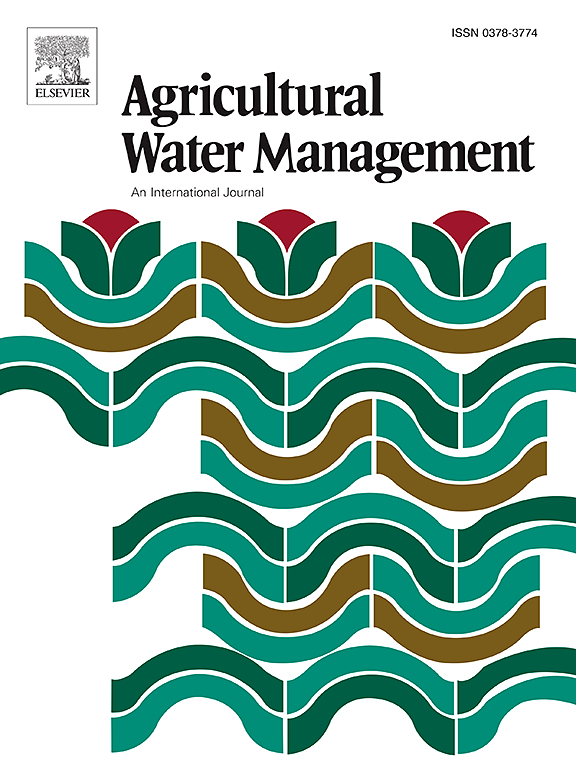华北平原农业优势分区地下水水质变化与流域间调水及过度开发控制
IF 6.5
1区 农林科学
Q1 AGRONOMY
引用次数: 0
摘要
流域间调水(interbasin water transfer, IBWT)和地下水开采减少(groundwater exploitation reduction, GWER)改变了华北平原的地表和地下水文过程,但地下水水质随流域间调水和地下水开采减少的变化尚不清楚。为了解决这一问题,在河北平原典型分区(邯郸东部平原)共采集了209个地下水样本和26个地表水样本。在2023年5月、9月和12月三次采样活动中测量了微量元素。结果表明,该地区深层地下水比浅层地下水更适合饮用。市区和农田的污水质素较差,可能是由农业作业和家庭及工业部门的污水造成的。在利用地下水(特别是SGW)灌溉作物的情况下,应充分考虑盐分控制措施,避免高盐分危害。水位的波动(低于2 m)大多伴随着SGW盐度的降低。一旦水位上升超过2 m,盐可能在SGW和DGW中积累。此外,三峡工程和河北引黄白洋淀工程共同促进了浅层地下水的淡化,而三峡工程和南水北调工程共同引发了深层地下水的盐渍化。该研究是了解受IBWT和GWER影响的地下水质量变异的重要一步,对全球类似流域的多个水源的优化调节和管理具有重要意义。本文章由计算机程序翻译,如有差异,请以英文原文为准。
Groundwater quality variability with inter-basin water transfer and overexploitation control in an agriculture-dominant subregion of North China Plain
Inter-basin water transfer (IBWT) and groundwater exploitation reduction (GWER) are changing the surface and subsurface hydrological processes in the North China Plain (NCP), but groundwater quality variability with the impacts of IBWT and GWER remains unclear. To address this issue, a total of 209 groundwater samples and 26 surface water samples were collected from a typical subregion (Handan Eastern Plain) of the NCP, and major ions & trace elements were measured during three sampling campaigns (May, September, December 2023). Results showed that deep groundwater (DGW) was more suitable for drinking than shallow groundwater (SGW) in this region. Poor quality of SGW in urban areas and farmlands may result from agricultural practices and sewage from domestic and industrial sectors. Salinity control measures should be fully considered to avoid high salinity hazards, in the case of utilizing groundwater (especially SGW) to irrigate the crops. The fluctuations of water levels (below 2 m) were mostly concomitant with reduced salinity of SGW. The salts likely accumulated in the SGW and DGW once the water level increased over 2 m. Additionally, the GWER and the Water Diversion from the Yellow River to the Baiyangdian Lake in Hebei Province jointly contributed to the desalinization of shallow groundwater, while the GWER and the South-to-North Water Diversion Project triggered the salinization of deep groundwater. This study is a step forward in the knowledge of groundwater quality variability impacted by IBWT and GWER, with important implications for optimized regulation and management of multiple water sources in similar basins worldwide.
求助全文
通过发布文献求助,成功后即可免费获取论文全文。
去求助
来源期刊

Agricultural Water Management
农林科学-农艺学
CiteScore
12.10
自引率
14.90%
发文量
648
审稿时长
4.9 months
期刊介绍:
Agricultural Water Management publishes papers of international significance relating to the science, economics, and policy of agricultural water management. In all cases, manuscripts must address implications and provide insight regarding agricultural water management.
 求助内容:
求助内容: 应助结果提醒方式:
应助结果提醒方式:


